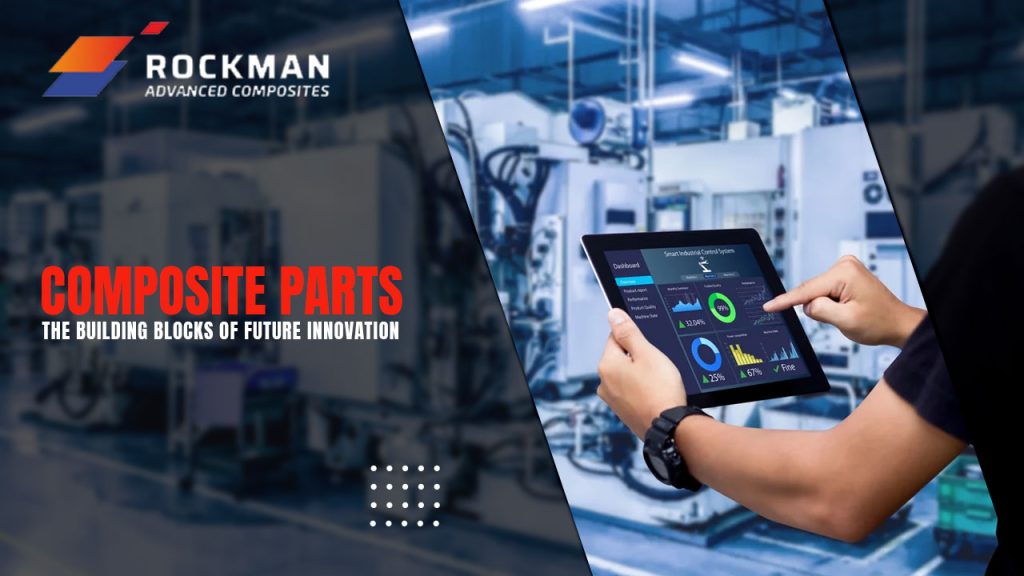Composite parts have been a breakthrough in the engineering material field, as these parts have several desirable properties ranging from dimensional stability durability, resistance to corrosion, and high strength-to-weight ratio. These parts have become a valuable asset for diverse industries due to their lightweight, durable, and resistant to corrosion features. Today, these parts are crucial and excessively being used in automotive, aerospace, defense, and marine industries and are replacing parts made up of metal, wood, or other traditional materials. Composite parts come with the properties of different materials and are reshaping industries through innovative solutions.
What Are Composite Parts?
Composite parts are made up by combining two or more materials like fibers and a matrix and have properties that are greater than the individual material. These parts are usually made from combining fibers like glass, and carbon with matrix like epoxy resins or thermoplastics. Thus these parts possess superior mechanical properties like durability, lightweight, and exceptional strength. Due to these properties and features, composite parts are becoming essential in applications where parts made with traditional materials will fall short, specifically in demanding conditions.
Different Composites used to Manufacturing Parts
Carbon Fiber-Reinforced Polymers
This composite material is incredibly strong and light in weight and hence parts made with the composite materials are widely used in high-performance applications like aircraft and sports equipment.
Glass Fiber-Reinforced Polymers
Although this composite material is not as strong as carbon fiber but this material is certainly an affordable alternative to traditional material and hence parts made with this material are popular in automotive and construction industries.
Composite Parts Manufacturing Processes
Composite parts are manufactured using advanced techniques to ensure that fibers are precisely layered and oriented to offer the desired mechanical properties. Some of the key methods employed to manufacture composite parts include:
Autoclave Moulding
To manufacture composite parts through autoclave moulding, pre-impregnated fiber sheets are placed in a mould inside an autoclave and subjected to high pressure and temperature. Parts made with this process have high strength and are of top quality. This process is expensive and time-consuming and hence is used for making parts for high-end applications like aerospace.
Resin Transfer Moulding
This process is generally used to manufacture large and complex parts that are mostly required in the automotive industry. In this process, fibers are kept in a mould, and resin is injected to saturate the fibers. This process is used to create strong and large parts having a high glass-to-resin ratio and is generally used to make car body shells.
Pultrusion
Pultrusion is a composite parts manufacturing process that turns resin matrices and fiber reinforcements into straight, long parts having different cross-sectional shapes like hollow tubes, flat and corrugated sheets, channels, and angles. This is an automated process in which fibers are pulled through resin and a heated die to produce long, continuous parts with consistent cross-sections. This process is ideal for parts like beams, and rods, and for other construction structures.
3D Printing of Composite
Additive manufacturing or 3D printing is increasingly used for manufacturing composite parts of complex shapes. The parts manufactured through this process result in minimal waste. Though 3D printing is in its early stages for manufacturing composite parts but shows promise for rapid prototyping and customized parts.
Key Applications of Advanced Composite Parts
Aerospace and Defense
Composite parts find great application across aerospace and defense industries where weight, fuel efficiency, and performance greatly matter. Composite parts are used in the aerospace industry to reduce the weight of the aircraft by up to 20% compared to traditional materials like aluminium. In the defense sector also, composite parts are utilised for aircraft and vehicles due to their excellent strength-to-weight ratio.
Automotive Industry
With the growing demand for electric vehicles and strict emissions regulations, the automotive industry is making use of composite parts made up of carbon fiber or fiberglass to manufacture lighter vehicles without compromising quality and safety. With light-in-weight suspension components, body panels, and other vital automotive parts, the vehicle’s weight is reduced and fuel efficiency is improved.
Wind Energy
The turbine blades are generally made of glass and carbon fiber composite that provide blades with the required strength and flexibility. Blades made of composite parts are able to withstand harsh weather and are light in weight to reduce the structural load.
Conclusion
Advanced composite parts are going to be at the forefront of materials technology. These parts are known to possess strength, durability, and lightweight properties and are leading to advancements in the aerospace, automotive, and renewable energy sectors, among others. With emerging trends like sustainable materials, smart composites, and automation, the future of composite parts looks promising. As these technologies become more accessible and affordable, composite parts will continue to reshape industries, driving innovation, and making an impact on both the products as well as the environment.








